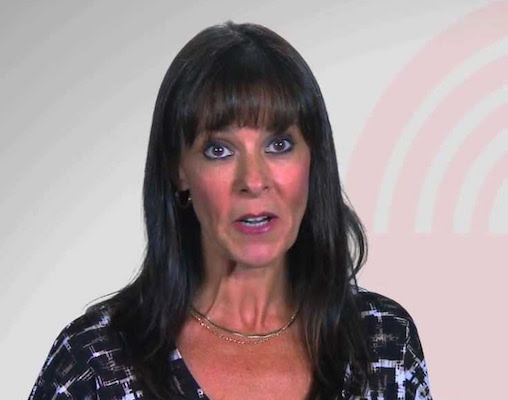This article was originally posted on the website of the James McGregor Stewart Society. Re-posted with permission.
About the word inclusion There is often much confusion Spare me your condescension privilege and pretension
I wrote about inclusion before, but I had relatively benign feelings back then. Now I find myself at age 70 and pretty annoyed.

This is what Laura Lee Langley, Nova Scotia’s Public Service Commissioner, has to say in her introduction to All Together: An Action Plan for Diversity and Inclusion in the Public Service 2019-2024. (Pay special attention to the bold parts. Quiz at the end.)
Message from the Public Service Commissioner
Nova Scotia is a great place to live, work, and learn. It’s also a diverse and vibrant community of people from all backgrounds, abilities, and ways of life. This is why the Government of Nova Scotia, as one of the largest employers in the province, is leading the way to ensure we have an equally diverse and inclusive public service. A diverse, inclusive public service ensures equity seeking groups -including Indigenous people, African Nova Scotians, persons with disabilities, and other under-represented groups—are genuinely included, celebrated, and given opportunities to succeed. It is a public service that is welcoming, culturally competent, and free of discrimination; one that serves in a way that respects and includes the many cultures and communities of this province. Genuine inclusion means all public servants feel safe and valued when they come to work, so they are comfortable giving their best to the people of Nova Scotia. It helps offset our shrinking labour force and makes us stronger.
Organizations with diverse and inclusive workplaces attract and retain a skilled, dynamic, and diverse workforce and benefit from a range of perspectives and experiences. We will perform better as a public service by being more engaged, more innovative in our approaches to problem solving, more aware of citizens’ needs, and more flexible in our response to those needs. Our efforts are gaining recognition. In 2018 and 2019, the Nova Scotia Government was recognized as one of Canada’s Best Diversity Employers. We are proud of this progress, which is a direct result of the amount of work that has been done by employees, stakeholders, and partners. We also acknowledge we still have work to do, and this will be reflected in the new strategy that will take us to new levels of leadership in diversity and inclusion.
Laura Lee Langley Public Service Commissioner
Laura Lee sees two things – diversity and inclusion – and they aren’t the same. Diversity is what drives evolution. The beak of the finch, the fish that walks, Michael Phelps, Covid-19 immunity. It works in business because new ideas are put forward that offer a different and innovative perspective. New ideas are anathema in government. Diversity brings too much change.
Inclusion is the opposite, implying that there are two sets of people – those who are in and those who are out. People with disabilities need to be included. African Nova Scotians want to be included. Inclusion is condescending. Inclusion drives uniformity. Inclusion is boring. Inclusion is co-option.
Laura Lee thinks I want to be like her. Nothing, nothing could be farther from my mind. Most government bureaucrats confuse diversity and inclusion. They understand inclusion and resent diversity. Charity begets inclusion, excellence depends on diversity. Excellence is a threat.
Laura Lee’s report promises a different outcome than the last go around called Raising the Bar, in effect from 2014 to 2018, which earned failing grades from the province’s auditor:
Overall Conclusions
• The Public Service Commission promotes diversity and inclusion, but has not completed all actions outlined in its diversity and inclusion strategy or assessed whether the goals of the strategy were met.
• The Public Service Commission does not have an adequate process to identify, collect, and analyze data needed to evaluate the effectiveness of its diversity and inclusion work.
• The departments of Agriculture, Community Services, and Justice promote diversity and inclusion, but improvements are needed.
From Rising the Bar
Critical to any plan are:
- Knowing where we are
- Goals
- Targeted and relentless recruitment
- Evaluation
- Reporting
- Repeat
Laura Lee foresees three stages:
- Phase One: Current State Assessment
- Phase Two: Goal Setting
- Phase Three: Implementation and Action Planning
Well, kinda.
- She relies on the unrigorous “Count Yourself In” census for phase one.
- Goals are set based thereupon
- She mentions recruitment once
- She values measurement
- Reports will be public
- Annual reporting implies repetition
Laura Lee’s plan lasts 5 years. There is no timetable. Don’t hold your breath.
Quiz
equity seeking groups means (pick one)
- people with nothing else to offer
genuinely included, celebrated, means (pick one)
- previous iterations were disingenuous
- party on!
given opportunities to succeed means (pick one)
- you people always have your hand out
- Indigenous people, African Nova Scotians, persons with disabilities, and other under-represented groups can’t succeed on their own.
Genuine inclusion means all public servants feel safe and valued means (pick one)
- just like in crosswalks
stakeholders means (pick one)
- I embrace jargon
new levels of leadership in diversity and inclusion means (pick one)
- the old level is zero
See also: The NS Health Authority Board of Directors: White, well off, and without disabilities
With a special thanks to our generous donors who make publication of the Nova Scotia Advocate possible.
Subscribe to the Nova Scotia Advocate weekly digest and never miss an article again. It’s free!



